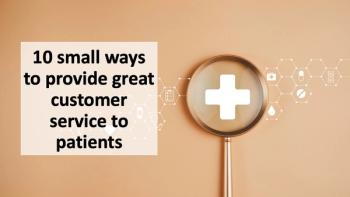
|Slideshows|February 5, 2014
Six Smart Devices for Physicians and Their Patients
A look at some of the smartest technology for physicians today - or in the near future.
Advertisement
Here's a look at six great devices - some available today and some in the near future - that take practicing medicine and engaging with patients to the next level. Â If you want to learn more read "Smart Technology at Your Medical Practice."
Newsletter
Optimize your practice with the Physicians Practice newsletter, offering management pearls, leadership tips, and business strategies tailored for practice administrators and physicians of any specialty.
Advertisement
Advertisement
Advertisement
Trending on Physicians Practice
1
Practice tip of the week: Hiring members of Gen Z
2
Best of 2025: 10 small ways to provide great customer service to patients
3
Inside the retention gap: Why engagement shouldn’t stop after physicians sign
4
Best of 2025: Does independent medical practice have a future?
5




